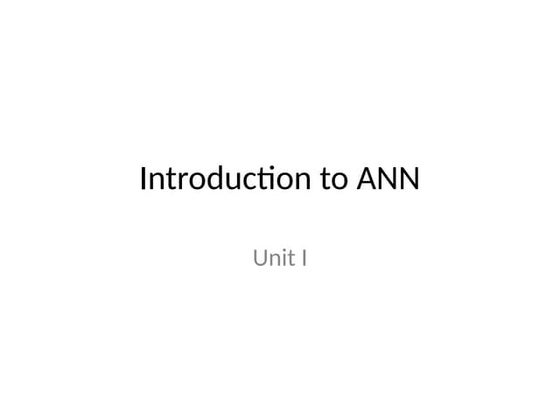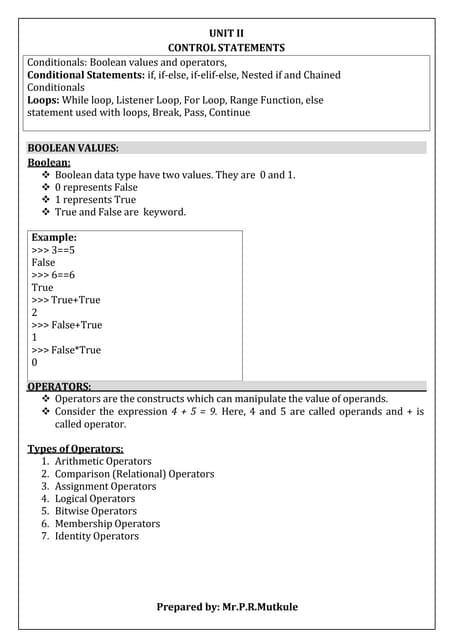Projections of points.pptx
Download as PPTX, PDF0 likes18 views
The document discusses orthographic projection, which is a method of projection where the projectors are parallel to each other and perpendicular to the projection plane. There are three main views produced in orthographic projection: the front view, top view, and side view. Points in an object are projected onto the reference planes (vertical, horizontal, or profile planes) to form the views. The location of a point relative to the reference planes is specified by its coordinates in the different views.
1 of 8
Download to read offline








Recommended
Demo_ED.ppt.pptx



Demo_ED.ppt.pptxPraveen Kumar
Ã˝
The document discusses different types of planes based on their position relative to reference planes. It describes planes that are perpendicular to both reference planes, perpendicular to one plane and parallel to the other, and perpendicular to one plane and inclined to the other. It also discusses obtaining projections of planes in different positions, including planes perpendicular to one reference plane and parallel to the other, and planes perpendicular to one plane and inclined to the other. Projections are obtained in one or two stages depending on the plane's position.Projection of straight lines I.pdf



Projection of straight lines I.pdfMuditKumar59
Ã˝
1) The document discusses orthographic projections of points, lines, and planes. It provides notation for different views, such as front view (FV) and top view (TV).
2) Key concepts covered include locating an object relative to horizontal and vertical planes using quadrants, and drawing the FV and TV based on the object's location. Examples are given for points located in different quadrants.
3) Projections of straight lines are also discussed, including lines parallel or inclined to the planes. True length, reduced length, and inclinations of views are important parameters.
4) Several example problems are provided to demonstrate how to draw orthographic projections of points and lines in different configurations. Steps areUnit 1 Projection of straight lines I.pdf



Unit 1 Projection of straight lines I.pdfNilesh Kalyankar
Ã˝
1) The document discusses orthographic projections of points, lines, and planes. It provides notation for different views, such as front view (FV) and top view (TV).
2) Key concepts covered include locating an object relative to horizontal and vertical planes using quadrants, and drawing the FV and TV based on the object's location. Examples are given for points located in different quadrants.
3) Projections of straight lines are also discussed, including lines parallel or inclined to the planes. True length, reduced length, and inclinations of views are important parameters.
4) Several example problems are provided to demonstrate how to draw orthographic projections of points and lines in different configurations. Steps areProjections unit 3



Projections unit 3Rai University
Ã˝
The document discusses orthographic projections and projections of solids. It defines orthographic projections as a method of representing the shape of a 3D object on a 2D surface using multiple views. It describes the principal planes used - horizontal plane, vertical frontal plane, and profile plane. It also discusses the first angle and third angle methods of projection. The document then defines different types of solids like polyhedra and solids of revolution. It describes various polyhedra like prisms, pyramids, and their types. It also defines solids of revolution like cylinders, cones, spheres. Important terms used in projections of solids like edges, generators, apex, and axis are also explained.ORTHOGRAPHIC PROJECTIONS



ORTHOGRAPHIC PROJECTIONSChukka Nikhil Chakravarthy
Ã˝
Orthographic projections are a method of technical drawing where views of an object are projected onto planes perpendicular to the object. There are three principal planes - the horizontal plane, vertical frontal plane, and profile plane. Views are the front view projected on the vertical plane, top view on the horizontal plane, and side view on the profile plane. The document provides details on first and third angle projection methods, examples of orthographic projections of different objects, and terminology used in orthographic projections.Unit 7



Unit 7Chukka Nikhil Chakravarthy
Ã˝
Orthographic projections are a technical drawing method that projects views of an object onto planes. There are three principal planes - the horizontal plane, vertical frontal plane, and profile plane. Views are the front view projected on the vertical plane, top view on the horizontal plane, and side view on the profile plane. There are two common methods for orthographic projections - first angle and third angle projection.Unit -5.pptx



Unit -5.pptxPraveen Kumar
Ã˝
This document provides information about orthographic projections and isometric projections. It defines key terms like planes of projection, different views, and methods of projection. It explains how to draw multi-view orthographic projections using the first angle method and construct isometric projections. Examples are provided to demonstrate how to draw front, top, and side views of objects from pictorial representations using orthographic projections as well as how to draw basic 2D shapes using isometric projections.II_UNIT- Introduction, POINTS, LINES-_OK.pdf



II_UNIT- Introduction, POINTS, LINES-_OK.pdfRevathiChandru
Ã˝
Computer aided engineering graphics notesPROJECTION OF LINES.ppt



PROJECTION OF LINES.pptvirendra346020
Ã˝
The document provides instructions for drawing orthographic projections of points, lines, and solids. It defines key terms like object, observer, horizontal and vertical planes. Points and lines can be placed in four quadrants defined by the horizontal and vertical planes. Front, top, and side views are drawn by projecting the object onto the respective planes. Examples are given of drawing the projections of points and lines in different orientations, as well as procedures for determining true lengths and angles from the projected views.PROJECTION OF POINT AND LINE



PROJECTION OF POINT AND LINESmit Shah
Ã˝
The document describes the process of orthographic projections to draw 2D projections of 3D objects. It defines key terms like object, observer, horizontal plane, vertical plane and the four quadrants formed. It explains how to draw front, top and side views of points and lines placed in different quadrants, and how the views are affected. It provides notations for labeling different views. It then describes in detail the process to draw projections of straight lines placed in different positions, including obtaining their true lengths and inclinations when only limited data is available from the views. Pictorial diagrams are also provided to visualize each case.6 orthographic proj



6 orthographic projSalah Uddin
Ã˝
The document discusses multi-view orthographic projections used in technical drawing. It defines key terms like projection, view, and orthographic projections. It explains the different reference planes used - horizontal plane, vertical frontal plane, and profile plane. It also discusses the different views - front view, top view, and side view. It describes the first angle and third angle projection systems and methods. It explains how to project views of points, lines, planes and solids by using the different reference planes and projection lines.TRACES OF LINES IN SPACE USING ORTHOGRAPHIC PROJECTION



TRACES OF LINES IN SPACE USING ORTHOGRAPHIC PROJECTIONSamuelSunbai
Ã˝
The document provides instructions for drawing orthographic projections of points, lines, planes and solids. It defines key terms and concepts used in orthographic projections including object, observer, horizontal and vertical planes, quadrants, front, top and side views. Notations for different views are also defined. Several examples are provided to illustrate how to draw orthographic projections of a point and straight lines placed in different quadrants, and how to determine true lengths, angles and views based on given information about the object. Steps to solve related problems are demonstrated.TRACES OF LINES IN SPACE USING ORTHOGRAPHIC PROJECTION



TRACES OF LINES IN SPACE USING ORTHOGRAPHIC PROJECTIONSamuelSunbai
Ã˝
The document provides instructions for drawing orthographic projections of points, lines, planes and solids. It defines key terms and concepts used in orthographic projections including object, observer, horizontal and vertical planes, quadrants, front, top and side views. Notations for different views are also defined. Several examples are provided to illustrate how to draw orthographic projections of a point and straight lines placed in different quadrants, and how to determine true lengths, angles and views based on given information about the object. Steps to solve related problems are demonstrated.Projection of points



Projection of pointsSuraj Meshram
Ã˝
1. The document discusses the projection of points and their views in different quadrants formed by the horizontal and vertical planes.
2. Key details include how the top view and front view of a point change depending on whether it is above or below the planes, and in front of or behind the vertical plane.
3. Examples are given of points located in each quadrant and their corresponding projections.Engerring Drawing by Deepak



Engerring Drawing by DeepakDeepak Garg
Ã˝
This document provides instructions and examples for drawing orthographic projections of points and lines. It begins by establishing conventions for labeling different views, such as using primes (') to denote top views. It then demonstrates how to draw the front, top, and side views of a point A placed in different quadrants. Additional concepts covered include drawing projections of various types of lines, such as vertical, horizontal, and angled lines. The document presents numerous problems showing how to determine projections, true lengths, and angles based on information provided about the point or line. It emphasizes important parameters to remember when drawing projections, such as true length, angles with planes, and view lengths. Finally, it defines the term "trace" as the point whereEngineering garphics projection of lines



Engineering garphics projection of linesPranav Kulshrestha
Ã˝
The document provides information on orthographic projections including:
- Key terms used in orthographic projections like object, observer, location of object, and quadrants.
- Notations used to label different views of an object.
- Examples of orthographic projections of a point located in different quadrants.
- Basic concepts for drawing projections of a point and straight lines in different orientations.
- Steps to draw projections when given information about the true length, inclinations, and positions of a line.5. projection of lines



5. projection of linesRayyan Khan
Ã˝
This is Mechnicial Engineering's subjrct technicial drawing slides
topic name is Projection of lines.
this would help you in how you draw front side and top view of a line.Projectionoflines(thedirectdata[1].com)![Projectionoflines(thedirectdata[1].com)](https://cdn.slidesharecdn.com/ss_thumbnails/projectionoflinesthedirectdata1-170802182419-thumbnail.jpg?width=560&fit=bounds)
![Projectionoflines(thedirectdata[1].com)](https://cdn.slidesharecdn.com/ss_thumbnails/projectionoflinesthedirectdata1-170802182419-thumbnail.jpg?width=560&fit=bounds)
![Projectionoflines(thedirectdata[1].com)](https://cdn.slidesharecdn.com/ss_thumbnails/projectionoflinesthedirectdata1-170802182419-thumbnail.jpg?width=560&fit=bounds)
![Projectionoflines(thedirectdata[1].com)](https://cdn.slidesharecdn.com/ss_thumbnails/projectionoflinesthedirectdata1-170802182419-thumbnail.jpg?width=560&fit=bounds)
Projectionoflines(thedirectdata[1].com)Ravi Patel
Ã˝
This document provides instructions for drawing orthographic projections of points, lines, planes and solids. It explains key concepts like quadrants, front view (FV), top view (TV), true length, inclination angles and more. Examples are given of drawing projections of a point and various types of lines (vertical, parallel, inclined) placed in different quadrants. The document establishes important parameters and notation for solving projection problems, including true length, angles of inclination, view lengths and positions of endpoints. Sample problems are worked through applying these concepts and parameters to draw projections when given information like dimensions, inclinations and endpoint positions.Orthographic projection EG



Orthographic projection EGBhavin SHAH
Ã˝
The document provides instructions for drawing orthographic projections of points and lines. It defines key terms and concepts used in orthographic projections including quadrants, front view (FV), top view (TV), horizontal plane (HP), and vertical plane (VP). Examples are given of drawing the projections of a point located in different quadrants, as well as different types of lines, such as vertical, parallel, and inclined lines. Guidelines are provided for determining the FV and TV based on whether the object is above or below the HP and in front of or behind the VP. Methods for finding true lengths, angles, and orientations are also described when only FV and TV are given.Projection of lines with problems



Projection of lines with problemsIndia
Ã˝
This document provides instructions for drawing orthographic projections of points, lines, planes and solids. It explains key concepts like quadrants, front view (FV), top view (TV), true length, inclination angles and more. Examples are given of drawing projections of a point and various types of lines (vertical, parallel, inclined) placed in different quadrants. The document establishes important parameters and notation for solving projection problems, including true length, angles of inclination, view lengths and positions of endpoints. Sample problems are worked through applying these concepts and parameters to draw projections when given information like dimensions, inclinations and endpoint positions.Lect 1.point



Lect 1.pointIndia
Ã˝
The document provides instructions for drawing orthographic projections of points and lines. It defines key terms and concepts used in orthographic projections including quadrants, front view (FV), top view (TV), horizontal plane (HP), and vertical plane (VP). Examples are given of drawing the projections of a point located in different quadrants, as well as different types of lines, such as vertical, parallel, and inclined lines. Guidelines are provided for determining the FV and TV based on whether the object is above or below the HP and in front of or behind the VP. Methods for finding true lengths, angles, and orientations are also described when only FV and TV are given.Subjective assignment ii of academic writing on engineering graphics



Subjective assignment ii of academic writing on engineering graphicsJonnala Subba Reddy
Ã˝
This document provides an overview of orthographic projections in engineering graphics. It defines key terms like principal planes, views, and methods of projection. It explains how to project points, lines, planes and solids onto different reference planes. It also describes the first angle and third angle methods of projection and provides examples of projecting simple objects using these methods. The document concludes by emphasizing the importance of the academic writing course for students in developing research skills like literature review, writing research papers and theses.Projectionofpointsandlines (1)



Projectionofpointsandlines (1)MSTAMIL21
Ã˝
This document provides lecture notes on orthographic projections of points and lines. It begins by outlining the key information needed to draw projections, including the object, observer, and object location. It then discusses the four quadrants formed by the horizontal and vertical planes and how an object's placement affects its front and top views. Various examples of point and line projections are shown, including the effects of an object's placement in different quadrants. Key concepts like true length, front, top, and side views are defined. The document concludes with example problems demonstrating how to draw orthographic projections of lines given information like lengths, angles and end point positions.Engineering Drawing Full ∫›∫›fl£



Engineering Drawing Full ∫›∫›fl£Akash Jessani
Ã˝
1. Drawings provide a better understanding of objects than verbal or written descriptions by conveying shape, size, and appearance in less time. As a result, drawings have become an important communication method in fields like engineering.
2. Orthographic projections are a technical drawing method that projects different views of an object onto horizontal, vertical, and profile reference planes while observing each plane perpendicularly. The front view is projected onto the vertical plane, the top view onto the horizontal plane, and the side view onto the profile plane.
3. There are two common methods for orthographic projections - first angle and third angle. In first angle, views are drawn with the object in the first quadrant above and in front ofMore Related Content
Similar to Projections of points.pptx (20)
Unit -5.pptx



Unit -5.pptxPraveen Kumar
Ã˝
This document provides information about orthographic projections and isometric projections. It defines key terms like planes of projection, different views, and methods of projection. It explains how to draw multi-view orthographic projections using the first angle method and construct isometric projections. Examples are provided to demonstrate how to draw front, top, and side views of objects from pictorial representations using orthographic projections as well as how to draw basic 2D shapes using isometric projections.II_UNIT- Introduction, POINTS, LINES-_OK.pdf



II_UNIT- Introduction, POINTS, LINES-_OK.pdfRevathiChandru
Ã˝
Computer aided engineering graphics notesPROJECTION OF LINES.ppt



PROJECTION OF LINES.pptvirendra346020
Ã˝
The document provides instructions for drawing orthographic projections of points, lines, and solids. It defines key terms like object, observer, horizontal and vertical planes. Points and lines can be placed in four quadrants defined by the horizontal and vertical planes. Front, top, and side views are drawn by projecting the object onto the respective planes. Examples are given of drawing the projections of points and lines in different orientations, as well as procedures for determining true lengths and angles from the projected views.PROJECTION OF POINT AND LINE



PROJECTION OF POINT AND LINESmit Shah
Ã˝
The document describes the process of orthographic projections to draw 2D projections of 3D objects. It defines key terms like object, observer, horizontal plane, vertical plane and the four quadrants formed. It explains how to draw front, top and side views of points and lines placed in different quadrants, and how the views are affected. It provides notations for labeling different views. It then describes in detail the process to draw projections of straight lines placed in different positions, including obtaining their true lengths and inclinations when only limited data is available from the views. Pictorial diagrams are also provided to visualize each case.6 orthographic proj



6 orthographic projSalah Uddin
Ã˝
The document discusses multi-view orthographic projections used in technical drawing. It defines key terms like projection, view, and orthographic projections. It explains the different reference planes used - horizontal plane, vertical frontal plane, and profile plane. It also discusses the different views - front view, top view, and side view. It describes the first angle and third angle projection systems and methods. It explains how to project views of points, lines, planes and solids by using the different reference planes and projection lines.TRACES OF LINES IN SPACE USING ORTHOGRAPHIC PROJECTION



TRACES OF LINES IN SPACE USING ORTHOGRAPHIC PROJECTIONSamuelSunbai
Ã˝
The document provides instructions for drawing orthographic projections of points, lines, planes and solids. It defines key terms and concepts used in orthographic projections including object, observer, horizontal and vertical planes, quadrants, front, top and side views. Notations for different views are also defined. Several examples are provided to illustrate how to draw orthographic projections of a point and straight lines placed in different quadrants, and how to determine true lengths, angles and views based on given information about the object. Steps to solve related problems are demonstrated.TRACES OF LINES IN SPACE USING ORTHOGRAPHIC PROJECTION



TRACES OF LINES IN SPACE USING ORTHOGRAPHIC PROJECTIONSamuelSunbai
Ã˝
The document provides instructions for drawing orthographic projections of points, lines, planes and solids. It defines key terms and concepts used in orthographic projections including object, observer, horizontal and vertical planes, quadrants, front, top and side views. Notations for different views are also defined. Several examples are provided to illustrate how to draw orthographic projections of a point and straight lines placed in different quadrants, and how to determine true lengths, angles and views based on given information about the object. Steps to solve related problems are demonstrated.Projection of points



Projection of pointsSuraj Meshram
Ã˝
1. The document discusses the projection of points and their views in different quadrants formed by the horizontal and vertical planes.
2. Key details include how the top view and front view of a point change depending on whether it is above or below the planes, and in front of or behind the vertical plane.
3. Examples are given of points located in each quadrant and their corresponding projections.Engerring Drawing by Deepak



Engerring Drawing by DeepakDeepak Garg
Ã˝
This document provides instructions and examples for drawing orthographic projections of points and lines. It begins by establishing conventions for labeling different views, such as using primes (') to denote top views. It then demonstrates how to draw the front, top, and side views of a point A placed in different quadrants. Additional concepts covered include drawing projections of various types of lines, such as vertical, horizontal, and angled lines. The document presents numerous problems showing how to determine projections, true lengths, and angles based on information provided about the point or line. It emphasizes important parameters to remember when drawing projections, such as true length, angles with planes, and view lengths. Finally, it defines the term "trace" as the point whereEngineering garphics projection of lines



Engineering garphics projection of linesPranav Kulshrestha
Ã˝
The document provides information on orthographic projections including:
- Key terms used in orthographic projections like object, observer, location of object, and quadrants.
- Notations used to label different views of an object.
- Examples of orthographic projections of a point located in different quadrants.
- Basic concepts for drawing projections of a point and straight lines in different orientations.
- Steps to draw projections when given information about the true length, inclinations, and positions of a line.5. projection of lines



5. projection of linesRayyan Khan
Ã˝
This is Mechnicial Engineering's subjrct technicial drawing slides
topic name is Projection of lines.
this would help you in how you draw front side and top view of a line.Projectionoflines(thedirectdata[1].com)![Projectionoflines(thedirectdata[1].com)](https://cdn.slidesharecdn.com/ss_thumbnails/projectionoflinesthedirectdata1-170802182419-thumbnail.jpg?width=560&fit=bounds)
![Projectionoflines(thedirectdata[1].com)](https://cdn.slidesharecdn.com/ss_thumbnails/projectionoflinesthedirectdata1-170802182419-thumbnail.jpg?width=560&fit=bounds)
![Projectionoflines(thedirectdata[1].com)](https://cdn.slidesharecdn.com/ss_thumbnails/projectionoflinesthedirectdata1-170802182419-thumbnail.jpg?width=560&fit=bounds)
![Projectionoflines(thedirectdata[1].com)](https://cdn.slidesharecdn.com/ss_thumbnails/projectionoflinesthedirectdata1-170802182419-thumbnail.jpg?width=560&fit=bounds)
Projectionoflines(thedirectdata[1].com)Ravi Patel
Ã˝
This document provides instructions for drawing orthographic projections of points, lines, planes and solids. It explains key concepts like quadrants, front view (FV), top view (TV), true length, inclination angles and more. Examples are given of drawing projections of a point and various types of lines (vertical, parallel, inclined) placed in different quadrants. The document establishes important parameters and notation for solving projection problems, including true length, angles of inclination, view lengths and positions of endpoints. Sample problems are worked through applying these concepts and parameters to draw projections when given information like dimensions, inclinations and endpoint positions.Orthographic projection EG



Orthographic projection EGBhavin SHAH
Ã˝
The document provides instructions for drawing orthographic projections of points and lines. It defines key terms and concepts used in orthographic projections including quadrants, front view (FV), top view (TV), horizontal plane (HP), and vertical plane (VP). Examples are given of drawing the projections of a point located in different quadrants, as well as different types of lines, such as vertical, parallel, and inclined lines. Guidelines are provided for determining the FV and TV based on whether the object is above or below the HP and in front of or behind the VP. Methods for finding true lengths, angles, and orientations are also described when only FV and TV are given.Projection of lines with problems



Projection of lines with problemsIndia
Ã˝
This document provides instructions for drawing orthographic projections of points, lines, planes and solids. It explains key concepts like quadrants, front view (FV), top view (TV), true length, inclination angles and more. Examples are given of drawing projections of a point and various types of lines (vertical, parallel, inclined) placed in different quadrants. The document establishes important parameters and notation for solving projection problems, including true length, angles of inclination, view lengths and positions of endpoints. Sample problems are worked through applying these concepts and parameters to draw projections when given information like dimensions, inclinations and endpoint positions.Lect 1.point



Lect 1.pointIndia
Ã˝
The document provides instructions for drawing orthographic projections of points and lines. It defines key terms and concepts used in orthographic projections including quadrants, front view (FV), top view (TV), horizontal plane (HP), and vertical plane (VP). Examples are given of drawing the projections of a point located in different quadrants, as well as different types of lines, such as vertical, parallel, and inclined lines. Guidelines are provided for determining the FV and TV based on whether the object is above or below the HP and in front of or behind the VP. Methods for finding true lengths, angles, and orientations are also described when only FV and TV are given.Subjective assignment ii of academic writing on engineering graphics



Subjective assignment ii of academic writing on engineering graphicsJonnala Subba Reddy
Ã˝
This document provides an overview of orthographic projections in engineering graphics. It defines key terms like principal planes, views, and methods of projection. It explains how to project points, lines, planes and solids onto different reference planes. It also describes the first angle and third angle methods of projection and provides examples of projecting simple objects using these methods. The document concludes by emphasizing the importance of the academic writing course for students in developing research skills like literature review, writing research papers and theses.Projectionofpointsandlines (1)



Projectionofpointsandlines (1)MSTAMIL21
Ã˝
This document provides lecture notes on orthographic projections of points and lines. It begins by outlining the key information needed to draw projections, including the object, observer, and object location. It then discusses the four quadrants formed by the horizontal and vertical planes and how an object's placement affects its front and top views. Various examples of point and line projections are shown, including the effects of an object's placement in different quadrants. Key concepts like true length, front, top, and side views are defined. The document concludes with example problems demonstrating how to draw orthographic projections of lines given information like lengths, angles and end point positions.Engineering Drawing Full ∫›∫›fl£



Engineering Drawing Full ∫›∫›fl£Akash Jessani
Ã˝
1. Drawings provide a better understanding of objects than verbal or written descriptions by conveying shape, size, and appearance in less time. As a result, drawings have become an important communication method in fields like engineering.
2. Orthographic projections are a technical drawing method that projects different views of an object onto horizontal, vertical, and profile reference planes while observing each plane perpendicularly. The front view is projected onto the vertical plane, the top view onto the horizontal plane, and the side view onto the profile plane.
3. There are two common methods for orthographic projections - first angle and third angle. In first angle, views are drawn with the object in the first quadrant above and in front ofMore from Praveen Kumar (20)
Recently uploaded (20)
AI-Powered Power Converter Design Workflow.pdf



AI-Powered Power Converter Design Workflow.pdfAleksandr Terlo
Ã˝
Blending human expertise with AI-driven optimization for efficient power converter design.Unit 1- Review of Basic Concepts-part 1.pptx



Unit 1- Review of Basic Concepts-part 1.pptxSujataSonawane11
Ã˝
DS, ADT, Algorithms, Asymptotic Notations are summarized. Renewable-Energy-Powering-Mozambiques-Economic-Growth.pptx



Renewable-Energy-Powering-Mozambiques-Economic-Growth.pptxRofino Licuco
Ã˝
Mozambique, a country with vast natural resources and immense potential, nevertheless faces several economic challenges, including high unemployment, limited access to energy, and an unstable power supply. Underdeveloped infrastructure has slowed the growth of industry and hampered people’s entrepreneurial ambitions, leaving many regions in the dark—literally and figuratively.
https://www.rofinolicuco.net/blog/how-renewable-energy-can-help-mozambique-grow-its-economyData recovery and Digital evidence controls in digital frensics.pdf



Data recovery and Digital evidence controls in digital frensics.pdfAbhijit Bodhe
Ã˝
This topic contain information about Data recovery and Digital evidence controls in cyber and digital awarenessVon karman Equation full derivation .pdf



Von karman Equation full derivation .pdfEr. Gurmeet Singh
Ã˝
Von karman Equation full derivation
By Er. GURMEET SINGH
G.C.E.T JAMMU
Contact: gurmeet.b.tech@gmail.com
M.tech Transportation Engineering Helium Boosting & Decanting With Hydro Test Machine



Helium Boosting & Decanting With Hydro Test MachinePaskals Fluid Systems Pvt. Ltd.
Ã˝
About:
A helium boosting and decanting system is typically used in various industrial applications, particularly in the production and handling of gases, including helium including leak test of reciprocating cylinder. Here’s a brief overview of its components and functions:
Components
1. Helium Storage Tanks: High-pressure tanks that store helium@ 150 bars.
2. Boosting Pumps: Designed to boost helium pressure up to 150 bar, ensuring efficient flow throughout the system.
3. Decanting Unit: Separates liquid helium from gas, facilitating decanting at pressures of up to 2 bars.
4. Pressure Regulators: Maintain and control the pressure of helium during transport.
5. Control Valves: automatic control valve is provided for the flow and direction of helium through the system.
6. Piping and Fittings: High-quality, corrosion-resistant materials for safe transport.
Functions
• Boosting Pressure: The system boosts helium pressure up to 150 bar for various applications.
• Decanting: Safely decants helium, separating liquid from gas at pressures of up to 2 bar.
• Safety Measures: Equipped with relief valves and emergency shut-off systems to handle high pressures safely.
• Monitoring and Control: Sensors and automated controls monitor pressure and flow rates.
Application:
• Cryogenics: Cooling superconducting magnets in MRI machines and particle accelerators.
• Welding: Used as a shielding gas in welding processes.
• Research: Crucial for various scientific applications, including laboratories and space exploration.
Key Features:
• Helium Storage & Boosting System
• Decanting System
• Pressure Regulation & Monitoring
• Valves & Flow Control
• Filtration & Safety Components
• Structural & Material Specifications
• Automation & Electrical Components
Cloud Cost Optimization for GCP, AWS, Azure



Cloud Cost Optimization for GCP, AWS, Azurevinothsk19
Ã˝
Reduce Cloud Waste across AWS, GCP, Azure and Optimize Cloud Cost with a structured approach and improve your bottomline or profitability. Decide whether you want to outsource or manage it in house. How to Build a Speed Sensor using Arduino?



How to Build a Speed Sensor using Arduino?CircuitDigest
Ã˝
Learn how to measure speed using IR sensors in this simple DIY project. This tutorial cover circuit diagram, Sensor calibration and speed calculations and optimized Arduino code for real time speed measurements.Improving Surgical Robot Performance Through Seal Design.pdf



Improving Surgical Robot Performance Through Seal Design.pdfBSEmarketing
Ã˝
Ever wonder how something as "simple" as a seal can impact surgical robot accuracy and reliability? Take quick a spin through this informative deck today, and use what you've learned to build a better robot tomorrow.Common Network Architecture:X.25 Networks, Ethernet (Standard and Fast): fram...



Common Network Architecture:X.25 Networks, Ethernet (Standard and Fast): fram...SnehPrasad2
Ã˝
X.25 Networks, Ethernet (Standard and Fast): frame format and specifications, Wireless LAN’s – 802.11x, 802.3 Bluetooth etc.
Designing Flex and Rigid-Flex PCBs to Prevent Failure



Designing Flex and Rigid-Flex PCBs to Prevent FailureEpec Engineered Technologies
Ã˝
Flex and rigid-flex printed circuit boards (PCBs) can be considered at the basic level some of the most complex PCBs in the industry. With that in mind, it’s incredibly easy to make a mistake, to leave something out, or to create a design that was doomed from the start.
Such design failures can end up leading to an eventual failure by delamination, short circuits, damage to the flex portions, and many other things. The easiest way to circumvent these is to start at the beginning, to design with preventing failure in mind rather than trying to fix existing designs to accommodate for problems.
In this webinar, we cover how to design flex and rigid-flex PCBs with failure prevention in mind to save time, money, and headaches, and what failure can look like.
For more information on our flex and rigid-flex PCB solutions, visit https://www.epectec.com/flex.Sppu engineering artificial intelligence and data science semester 6th Artif...



Sppu engineering artificial intelligence and data science semester 6th Artif...pawaletrupti434
Ã˝
Sppu University Third year AI&DS Artificial Neural Network unit 1Wireless-Charger presentation for seminar .pdf



Wireless-Charger presentation for seminar .pdfAbhinandanMishra30
Ã˝
Wireless technology used in chargerTaykon-Kalite belgeleri



Taykon-Kalite belgeleriTAYKON
Ã˝
Kalite Politikamız
Taykon Çelik için kalite, hayallerinizi bizlerle paylaştığınız an başlar. Proje çiziminden detayların çözümüne, detayların çözümünden üretime, üretimden montaja, montajdan teslime hayallerinizin gerçekleştiğini gördüğünüz ana kadar geçen tüm aşamaları, çalışanları, tüm teknik donanım ve çevreyi içine alır KALİTE.ESIT135 Problem Solving Using Python Notes of Unit-1 and Unit-2



ESIT135 Problem Solving Using Python Notes of Unit-1 and Unit-2prasadmutkule1
Ã˝
ESIT135 Problem Solving Using Python Notes of Unit-1 and Unit-2Projections of points.pptx
- 1. 08-Jul-09 SBT 1 ORTHOGRAPHIC PROJECTION Principle of projections * If the rays of light made to fall on the wall across the object, shadow / image of that object will appear on that wall. That means, object is being projected on the wall. * If straight lines are drawn from various points on the contour of an object to meet a plane, the object is said to be projected on that plane. * The image we are getting on that plane is called projection (view) of the object. * The lines from the object to the plane are called projectors. Methods of projection 1. Orthographic projection 2. Isometric projection 3. Oblique projection 4. Perspective projection
- 2. 08-Jul-09 SBT 2 Definition of Orthographic projection When the projectors are parallel to each other and also perpendicular to the plane, the projection is called orthographic projection. Three types of views …….. 1. Front View (FV) 2. Top View (TV) 3. Side View (SV) Reference plane 1. Vertical plane (VP) 2. Horizontal plane (HP) 3. Profile plane (PP) Reference line (x-y line)
- 3. A a’ Horizontal Plane (HP) Vertical Plane (VP) I Quad II III IV 50 50 TV Turn HP to coincide with VP x y 3 SBT 08-Jul-09 Concept of Projections a FV
- 4. x y 50 40 a a' Projection of Point (In 1st angle projection method) 4 SBT 08-Jul-09 VP HP Projector Locus
- 5. VP HP I II III IV A B C D a’ a d d’ b’ b c c’ Projections of Points (In all quadrant) a’ a b b’ c c’ d d’ 5 SBT 08-Jul-09 I II III IV x y
- 6. Points to keep in mind ……… Projection of a point on a Vertical Plane (VP) is called Front view (FV) Projection of a point on a Horizontal Plane (VP) is called Top View (FV) Distance of a point with respect to HP is specified by the FV Distance of a point with respect to VP is specified by the TV 6 SBT 08-Jul-09 Front view of point ‘A’ is represented by ‘a’’ Top view of point ‘A’ is represented by ‘a’ I angle – FV is obtained above the x-y line and TV below x-y line II angle – FV and TV both are obtained above x-y line III angle – FV is obtained below the x-y line and TV above x-y line IV angle – FV and TV both are obtained below x-y line
- 7. 08-Jul-09 SBT 7 No. Position of point (10 mm from given RP) Specified by Representation 1 FV a’ = 10 2 FV a’ = 10 3 TV a = 10 4 TV a = 10 Handy way to remember
- 8. 08-Jul-09 SBT 8 No. Position of points with respect to RP Representation 1. 2. 3. 4. 5. 6. 30 mm below HP and 20 mm in front of VP a’ = 30 a = 20 40 mm above HP and 20 mm behind VP a’ = 40 a = 20 30 mm above HP and 40 mm in front of VP a’ = 30 a = 40 15 mm below HP and 25 mm behind VP a’ = 15 a = 25 Lies on HP and 20 mm behind VP a’ = 0 a = 20 Lies on VP and 10 mm below HP a’ = 10 a = 0 It’s time to check yourself…….




























